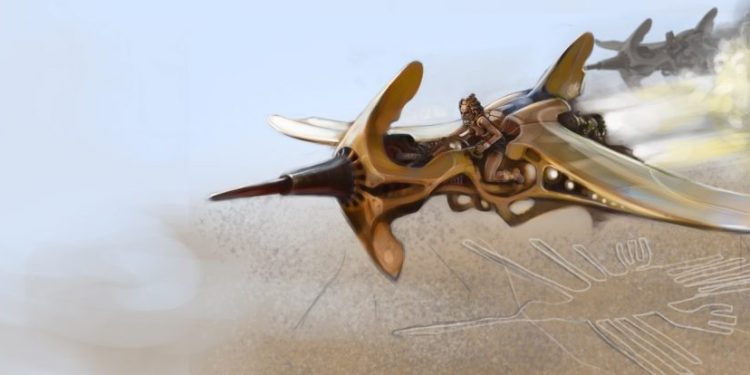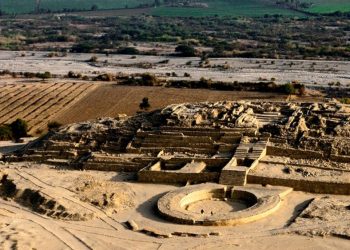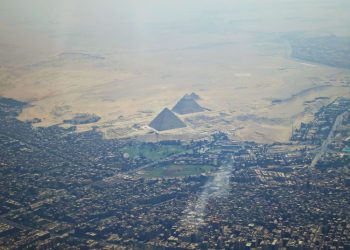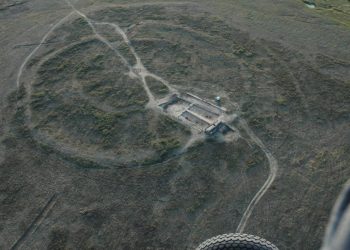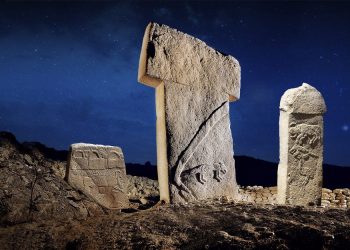Ancient India has one of the most extensive histories in the world. From science, medicine, engineering, and arts, to mythologies that are out-of-this-world, ancient India is a treasure trove in history.
In addition to their exquisite ancient temples, their greatest ancient texts called the “Vedas” make mention of a number of incredible things. Among the many subjects mentioned in the Vedas, their sacred writings mention “flying ships” that were seen flying in the sky, visiting continents around the globe over 6000 years ago; the Vimana.
The most famous Vimana is the so-called Pushpaka Vimana, an ancient flying machine that belonged to King Ravana.
Composed in Vedic Sanskrit, the texts constitute the oldest layer of Sanskrit literature and the oldest scriptures of Hinduism. In many Indian languages, the word Vimana is literally translated to aircraft, although in another context the word Vimana is also used to make reference to ancient Hindu temple architecture.
In the Ramayana, the Pushpaka vimana of King Ravana is described as follows:
- “The Pushpaka Vimana that resembles the Sun and belongs to my brother was brought by the powerful Ravana; that aerial and excellent Vimana going everywhere at will … that chariot resembling a bright cloud in the sky … and the King [Rama] got in, and the excellent chariot at the command of the Raghira, rose up into the higher atmosphere.’
The Parts of a Vimana
Just as the human body, if it is complete in all its limbs, is best able to accomplish things; the Vimana, if it is complete in all its parts, will be capable of functioning efficiently.
According to “Chaayaapurusha Shaastra” the 31 parts of the vimana are:
- 1. Vishwakriyaadarpana or mirror of outside views.
- 2. Shaktyaakarshana or energy attracting mirror.
- 3. Parivesha mechanism above the hood of the Vimana.
- 4. Angopasamhaara yantra or folding up yantra at the 7th bindukeelaka.
- 5. Vistr itakriyaa or opening out yantra location in the middle of the 11th section.
- 6. Vyroopya darpana and
- 7. Padmachakramukha at the shirobhaaga or crest of the Vimana.
- 8. The Kuntinee-shakti mechanism is to be in the neck of the Vimana.
- 9. Pushpinee and Pinjulaa Mirrors are to be in the right side of the centre.
- 10. At the front of the left side are to be located the Naalapanchaka or 5 pipes.
- 11. Guhaagarbha mirror yantra is to be in the front part of the stomach of the plane.
- 12. Thamoyantra at the north-western side.
- 13. Pancha-vaataskandha-naala on the western centre.
- 14. Row dree mirror.
- 15. Vaataskandha keelaka at the bottom centre.
- 16. Shaktisthaana at the front and right sides.
- 17. Shabda-kendra-mukha at the left side.
- 18. Vidyuddwaadashaka at the north-east side.
- 19. Praanakundala at the moola of the Vimana.
- 20. Shaktyudgama at the navel of the Vimana.
- 21. Vakraprasaarana at the side of Vimanaadhaara.
- 22. Shaktipanjara in the central portion.
- 23. Shirahkeelaka at the head of the Vimana.
- 24. Shabdaakarshaka yantra at the shoulder.
- 25. Pata-prasaarana at the bottom centre.
- 26. Dishaampati yantra at the left front.
- 27. Pattikaabhraka at the center of the hood of the Vimana.
- 28. Solar power attractor at the top of the Vimana.
- 29. Apasmaara or poison gas at the sandhi-naala mukha or junction tube front.
- 30. Sthambhana yantra at the bottom.
- 31. Vyshwaanara-naala at the navel centre.
The above list makes reference to the 31 components of a Vimana. Without them, the ancient flying machines cannot achieve their potential.
Although certainly interesting, it remains a mystery whether the vimana actually existed, or if they were just mythological “devices” mentioned in ancient folklore.
Nonetheless, it is extremely interesting to find how certain Vimanas, like that of King Ravana are said to have traveled above Earth’s atmosphere, into space.
Join the discussion and participate in awesome giveaways in our mobile Telegram group. Join Curiosmos on Telegram Today. t.me/Curiosmos
Source and reference: Vimana Aircraft of Ancient India and Atlantis – By David Hatcher Childress, Ivan Terence Sanderson.



